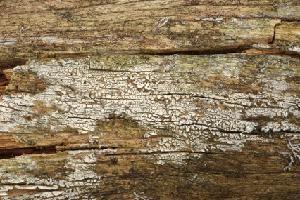
This genome was sequenced as a part of the large-scale multi-genome JGI CSP Saprotrophic Agaricomycotina Project (SAP), which focuses on the diversity and evolution of decay mechanisms, organismal phylogenetic relationships, and developmental evolution. A large collaborative effort led by PI of this project, David Hibbett (Clark University) aims for master publication(s) of the SAP data analysis. Researchers who wish to publish analyses using data from unpublished SAP genomes are respectfully required to contact the PI and JGI to avoid potential conflicts on data use and coordinate other publications with the SAP master paper(s).
The genus Sistotremastrum belongs to the Trechisporales, an early diverging order in the Agaricomycotina, containing mostly simple, so called corticoid species, which form thin, membranous fruiting bodies on the substrate. Species of Sistotremastrum cause a brown rot of various tree species. By sampling representatives of the early diverging groups like the Trechisporales, we will gain a better understanding of the early events of the evolution of mushroom-forming fungi, including the evolution of nutritional strategies or fruiting body formation. Previous studies inferred that the most recent common ancestor of the Agaricomycotina has most probably been a white rot organism. To more precisely understand the origin and the genetic changes accompanying the evolution of white rot, we sequenced the genomes of early diverging Agaricomycotina species, including two species of Sistotremastrum. These species, along with representatives of other early diverging groups will help breaking up the internal branches at the base of the Agaricomycotina into smaller branches, thus enabling a more accurate mapping of genetic innovations through time and a better understanding of lignocellulose-degrading enzyme apparatus in Fungi.
Nutritional strategies in basal Agaricomycete fungi are often obscure, with evidence for mixed strategies in many orders, including the Trechisporales or the Cantharellales. These fungi form loose associations with plant species (including orchids or the Ericaceae) but at the same time they are capable of causing weak decay on dead plant material. Whether this type of nutritional strategy has been ancestral in the Agaricomycetes and served as a cradle for further diversification and specialization in nutritional modes will be one of the focal questions addressed using these genomes.
The phylogenetic position of the Trechisporales has been disputed. Previous multi-gene phylogenetic analyses provided weak or contradicting support for the placement of this group of wood-decayers. The sequenced genomes provide the resource for a phylogenomic evaluation of the position of the Trechisporales within the Agaricomycotina.
Genome Reference(s)
Nagy LG, Riley R, Tritt A, Adam C, Daum C, Floudas D, Sun H, Yadav JS, Pangilinan J, Larsson KH, Matsuura K, Barry K, Labutti K, Kuo R, Ohm RA, Bhattacharya SS, Shirouzu T, Yoshinaga Y, Martin FM, Grigoriev IV, Hibbett DS
Comparative Genomics of Early-Diverging Mushroom-Forming Fungi Provides Insights into the Origins of Lignocellulose Decay Capabilities.
Mol Biol Evol. 2016 Apr;33(4):959-70. doi: 10.1093/molbev/msv337
